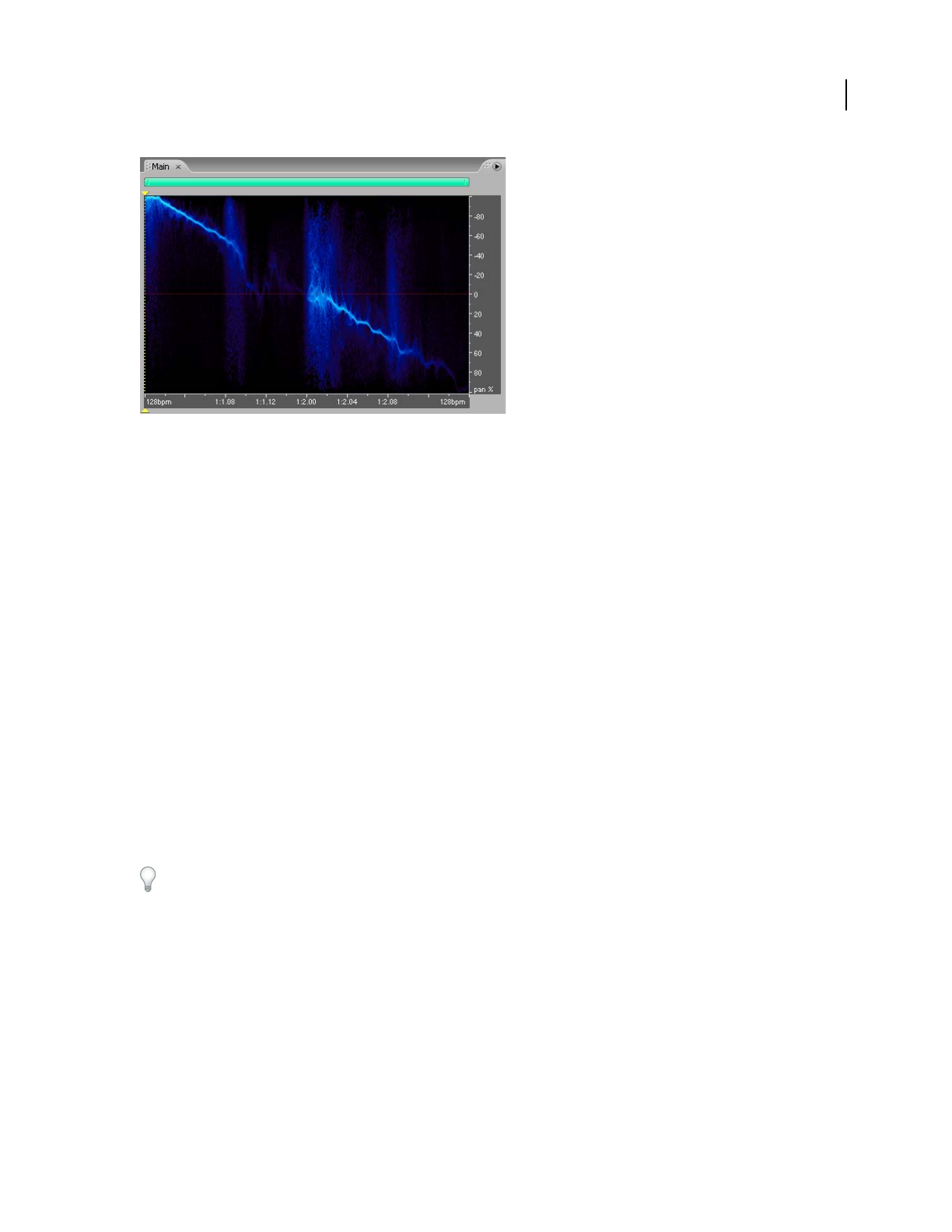Operation Manual
Table Of Contents
- Contents
- Chapter 1: Getting started
- Chapter 2: Digital audio fundamentals
- Chapter 3: Workflow and workspace
- Chapter 4: Setting up Adobe Audition
- Chapter 5: Importing, recording, and playing audio
- Chapter 6: Editing audio files
- Displaying audio in Edit View
- Selecting audio
- Copying, cutting, pasting, and deleting audio
- Visually fading and changing amplitude
- Working with markers
- Creating and deleting silence
- Inverting and reversing audio
- Generating audio
- Analyzing phase, frequency, and amplitude
- Converting sample types
- Recovery and undo
- Chapter 7: Applying effects
- Chapter 8: Effects reference
- Amplitude and compression effects
- Delay and echo effects
- Filter and equalizer effects
- Modulation effects
- Restoration effects
- Reverb effects
- Special effects
- Stereo imagery effects
- Changing stereo imagery
- Binaural Auto-Panner effect (Edit View only)
- Center Channel Extractor effect
- Channel Mixer effect
- Doppler Shifter effect (Edit View only)
- Graphic Panner effect
- Pan/Expand effect (Edit View only)
- Stereo Expander effect
- Stereo Field Rotate VST effect
- Stereo Field Rotate process effect (Edit View only)
- Time and pitch manipulation effects
- Multitrack effects
- Chapter 9: Mixing multitrack sessions
- Chapter 10: Composing with MIDI
- Chapter 11: Loops
- Chapter 12: Working with video
- Chapter 13: Creating surround sound
- Chapter 14: Saving and exporting
- Saving and exporting files
- Audio file formats
- About audio file formats
- 64-bit doubles (RAW) (.dbl)
- 8-bit signed (.sam)
- A/mu-Law Wave (.wav)
- ACM Waveform (.wav)
- Amiga IFF-8SVX (.iff, .svx)
- Apple AIFF (.aif, .snd)
- ASCII Text Data (.txt)
- Audition Loop (.cel)
- Creative Sound Blaster (.voc)
- Dialogic ADPCM (.vox)
- DiamondWare Digitized (.dwd)
- DVI/IMA ADPCM (.wav)
- Microsoft ADPCM (.wav)
- mp3PRO (.mp3)
- NeXT/Sun (.au, .snd)
- Ogg Vorbis (.ogg)
- SampleVision (.smp)
- Spectral Bitmap Image (.bmp)
- Windows Media Audio (.wma)
- Windows PCM (.wav, .bwf)
- PCM Raw Data (.pcm, .raw)
- Video file formats
- Adding file information
- Chapter 15: Automating tasks
- Chapter 16: Building audio CDs
- Chapter 17: Keyboard shortcuts
- Chapter 18: Digital audio glossary
- Index

ADOBE AUDITION 3.0
User Guide
67
Spectral Pan Display, with audio moving from left to right
Spectral Pan Display works well in conjunction with the Center Channel Extractor effect. That effect lets you isolate
frequenciesthatarecommontoboththeleftandrightchannels(inotherwords,soundsthatarepannedcenter).In
some cases, you may find that the audio you want to isolate is slightly off-center. You can use Spectral Pan Display
to determine the actual pan position of the audio you want to isolate and enter that value in the Center Channel
Extractor to improve the quality of the extraction. You can also use the Center Channel Extractor to boost the signal
of audio at a particular pan position. For more information, see “Center Channel Extractor effect” on page 163.
Another effect that works well with Spectral Pan Display is the Pan/Expand effect. The Pan/Expand effect lets you
shift the center channel of a stereo waveform and expand or narrow the stereo separation of the left and right
channels. For more information, see “Pan/Expand effect (Edit View only)” on page 166.
See also
“Adjusting spectral displays” on page 68
“Noise Reduction effect (Edit View only)” on page 149
About Spectral Phase Display
Spectral Phase Display shows the phase difference, in degrees, between the left and right channels. For example, if
any frequency is 180˚ out of phase, Spectral Phase Display shows bright patches near the +/-180˚ marks. You can
modify display settings for Spectral Phase Display using the Spectral Controls panel.
Audio that is more than 90˚ out of phase creates problems when summing to mono and may sound odd in stereo. To
help you determine how much audio is out of phase, Adobe Audition displays lines at the 90˚ marks by default.










